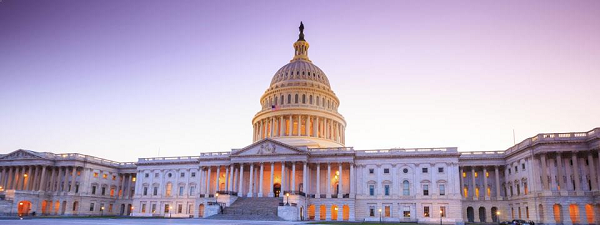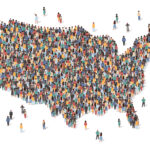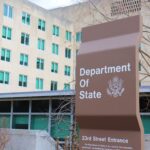United States Citizenship and Immigration Services (USCIS) has requested over $1.2 billion in funding from Congress to support its operations beyond August 31, 2020. As immigration attorneys, we know how critically important the agency is to families and businesses across the nation because without USCIS adjudicating cases, families cannot reunite and businesses’ ability to retain talent is uncertain. However, before Congress gives USCIS any financial support, guardrails need to be put up to ensure data is shared and the agency doesn’t drive itself into the ground again.
First, it is important that USCIS provide more specific data regarding the total number of applications received since March of this year and the exact amount of funds spent on vetting, by USCIS and diverted to other enforcement agencies. The decrease in application numbers alleged by USCIS seems surprisingly steep. The management of USCIS over the last three years has eroded trust to an extent that its ability to accurately portray the scope of the problem it faces is hard to believe. And if USCIS can’t clearly and accurately describe the scope of the problem, how will it understand the causes of this problem, or the remedy?
The justification provided for the bailout request is the impact of COVID-19. The pandemic has reportedly caused an alarming drop in application numbers, whose filing fees support USCIS operations. In the initial demand to Congress, made in May, USCIS Deputy Director for Policy, Joseph Edlow, described an “an alarming drop in applications at the end of March” and warned of a “crippling budget shortfall.” He proceeded to indicate that, as a result of COVID-19, USCIS had seen “a 50% drop in receipts and incoming fees starting in March” and predicted that “application and petition receipts will stay well below plan through the end of Fiscal Year 2020.”
Acting Secretary of the Department of Homeland Security, Chad Wolf, sent a supporting letter in which he remarked that “USCIS is in dire need of a one-time infusion of funding to ensure their operations continue past August 3, 2020” and that “USCIS’ annual Immigration Examinations Fee Account fee collections have not met their historical forecasted projections due to the COVID-19 pandemic.” The sentiments of Mr. Wolf were echoed by Russell T. Vought, Acting Director of the Office of Management and Budget, who also sent a supporting letter outlining that USCIS had experienced “a 51 percent year-over-year decline in receipts” when compared with 2019, for “a two-week period in March/April 2020.”
The time period referenced by Mr. Vought will ring a bell with most attorneys who practice employment-based immigration law. At the very beginning of April each year, U.S. petitioners file hundreds of thousands of H-1B cap petitions with USCIS. Of these, at least 85,000 are randomly selected for processing in a lottery, and receipted by USCIS. Therefore, USCIS receives a significant spike in applications and fees at the beginning of April each year, and did so in 2019. However, the H-1B cap process changed this year. In 2020, for the first time, the lottery took place in March using a registration system. H-1B cap applications could then be filed for the selected registrants at any time in April, May, or June. Accordingly, a significant discrepancy between the number of applications received at the beginning of April 2020, and the number received at the beginning of April 2019, could be explained by this new process – and may be balanced out by the additional H-1B cap filings through the remainder of April, May, and June.
Certain developments over the last few years also call into question whether such a sudden, significant, and sustained decrease in filings is likely. Under Matter of Simeio Solutions, LLC (2015), a change in worksite to a new metropolitan statistical area requires the filing of an H-1B amendment. Accordingly, employers will have been required to file many such amendments recently to ensure their H-1B employees, now working from home due to the pandemic, remain compliant. This should have resulted in an increase in filing. Furthermore, over the last three years persistent immigrant visa backlogs have crept into the EB-1 preference category for individuals born in India and China. This requires employers to file additional H-1B extensions while their employees await until their priority date becomes current. Unlike H-1B status, L status cannot be extended while a foreign national waits for a green card. There has been a corresponding increase in petitions being filed for individuals seeking a change from L-1A to H-1B, so that they can remain in the U.S. until their EB-1C priority date becomes current. Additionally, the 2018 Notice to Appear Policy Memorandum, which threatens the issuance of a Notice to Appear in immigration court immediately upon denial of an I-485, has served as a stimulus for the filing of additional applications to ensure foreign nationals maintain their nonimmigrant status until the adjudication of their I-485, even though this is not required. Not to mention the public charge rule, since enjoined, which resulted in a spike in Adjustment of Status filings before October, and again in February before the new rule took effect.
It should also be added that the COVID-19 pandemic has required a number of different groups file applications with USCIS who would not otherwise have done so. This includes, for example, individuals in a non-immigrant status who were planning to leave the U.S. but are now unable or unwilling to do so. Such individuals must file applications with USCIS to remain lawfully inside the country. Furthermore, a number of nonimmigrant visa categories allow applications to be filed either with USCIS or at an embassy, consulate, or border crossing (for example – TN, E-3, and blanket L petitions). Due to border closures and the risks of travel, these applications must now be filed with USCIS.
In his letter to Congress, Russell T. Vought states that “USCIS continues to analyze available data to refine revenue and spending projections.” For the reasons outlined above, it is imperative that USCIS release this new data as it becomes available. A substantial drop in applications is not implausible, and USCIS workers and their families should certainly not be held hostage to political maneuvering, but a grant of $1.2 billion cannot be justified through snippets of information and fragments of statistics, especially as now reports are surfacing that the agency may end up with a surplus and furloughs are delayed til at least August 31. There is just not enough good information. It is welcome news that the House Judiciary Committee will ask tough questions on Wednesday, July 29, 2020 of the agency and hear from witnesses and stakeholders, but this is not enough. We need good information, and at the very least, USCIS should provide a comparison of total applications received in April, May, and June between last year and the current year.
***
To learn more about the need for a more transparent and accountable USCIS, watch video footage from two congressional hearings, featuring then-AILA president Marketa Lindt and Director of Government Relations Sharvari Dalal-Dheini and learn more about how you can take action and urge Congress to #HoldUSCISAccountable.







